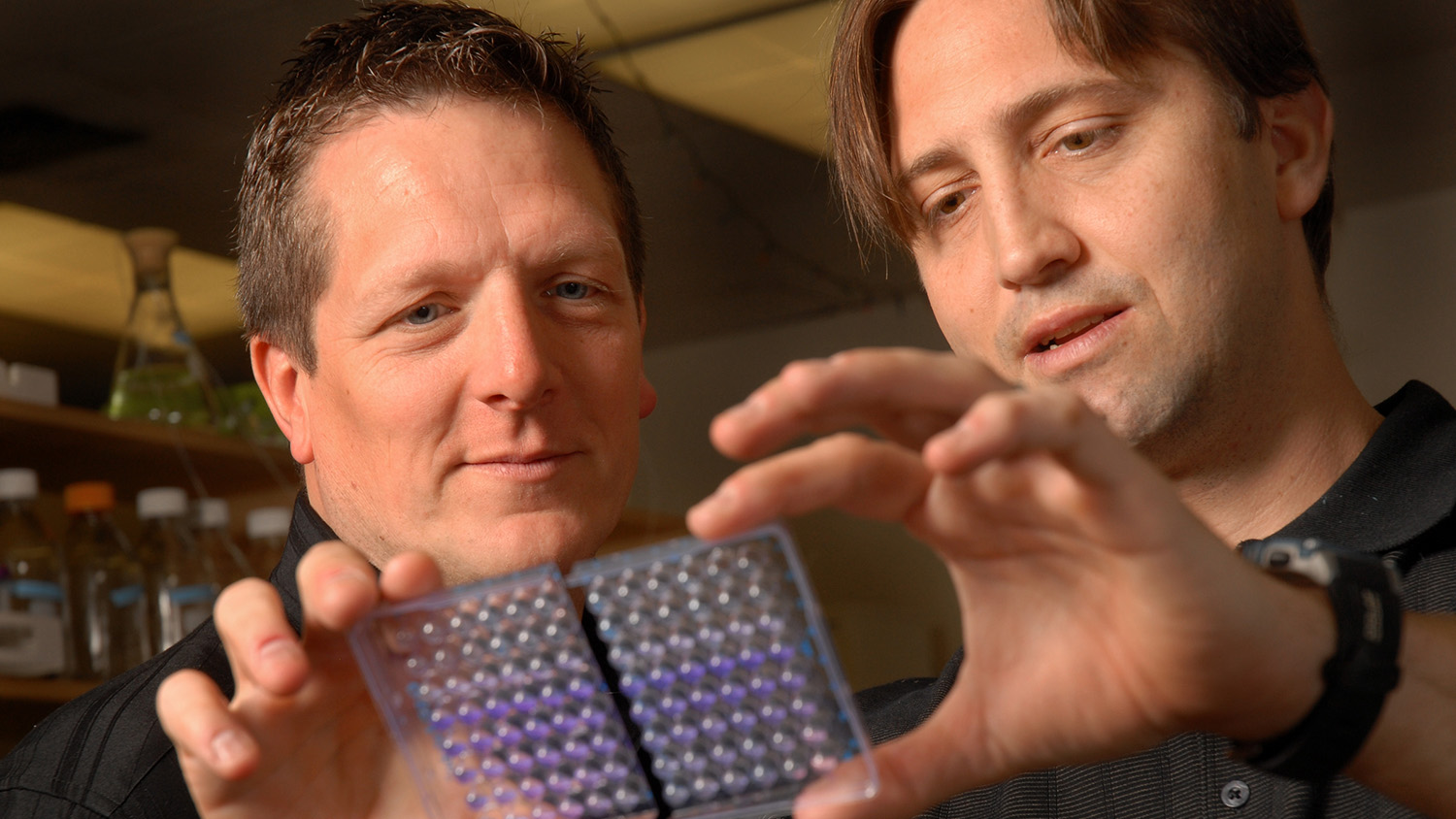Resistance Remedies

John Cavanagh and Christian Melander.
With the recent finding in Pennsylvania of a hospital patient with an E.coli infection that resists colistin, an antibiotic used as the last line of defense against multi-drug resistant bacteria, the scientific and medical communities continue to search for answers to the menace of superbugs.
While common antibiotics were able to treat the patient, the major concern is the spread of an antibiotic resistance factor previously unseen in the United States. NC State researchers are working on different approaches to fighting antibiotic-resistant bacteria.
Biochemist John Cavanagh and organic chemist Christian Melander started a company, Agile Sciences, that uses small molecules to target the resistance in superbugs to make them once again susceptible to common antibiotics.
The concept for their approach came from a marine sponge secretion that keeps the sponge free from bacterial colonization.
“Our molecules interfere with the bacteria’s ability to sense and respond to their environment,” Cavanagh said. “This interference strips the ability of the bacteria to mount protective responses, such as biofilm formation and the expression of antibiotic resistance traits, to environmental threats. The bacteria are rendered defenseless and can be effectively eliminated with traditional antibacterial approaches.”

Food scientist Rodolphe Barrangou and chemical engineer Chase Beisel approach the problem of antibiotic resistance another way: with the power of the gene-editing system called CRISPR. CRISPR systems target viral invaders; in the past decade or so, researchers have harnessed that power to delete DNA sequences from a cell. But since the CRISPR system is essentially a bacterial immune system, it can also be turned against itself to cause cell death.
“Resistant bacteria can be targeted by CRISPR systems,” Barrangou said. “The academic literature has already shown staph infections being knocked out in mice models.Food scientist Rodolphe Barrangou and chemical engineer Chase Beisel approach the problem of antibiotic resistance another way: with the power of the gene-editing system called CRISPR. CRISPR systems target viral invaders; in the past decade or so, researchers have harnessed that power to delete DNA sequences from a cell. But since the CRISPR system is essentially a bacterial immune system, it can also be turned against itself to cause cell death.
“There’s lots of promise here and less engineering needed because CRISPR comes from bacteria. That means taking a bacteria’s defensive machinery and directing it against itself to make it commit cellular suicide. Think of the antibacterial potential of unleashing that power.”
– M. Kulikowski
This post was originally published in College of Agriculture and Life Sciences News.